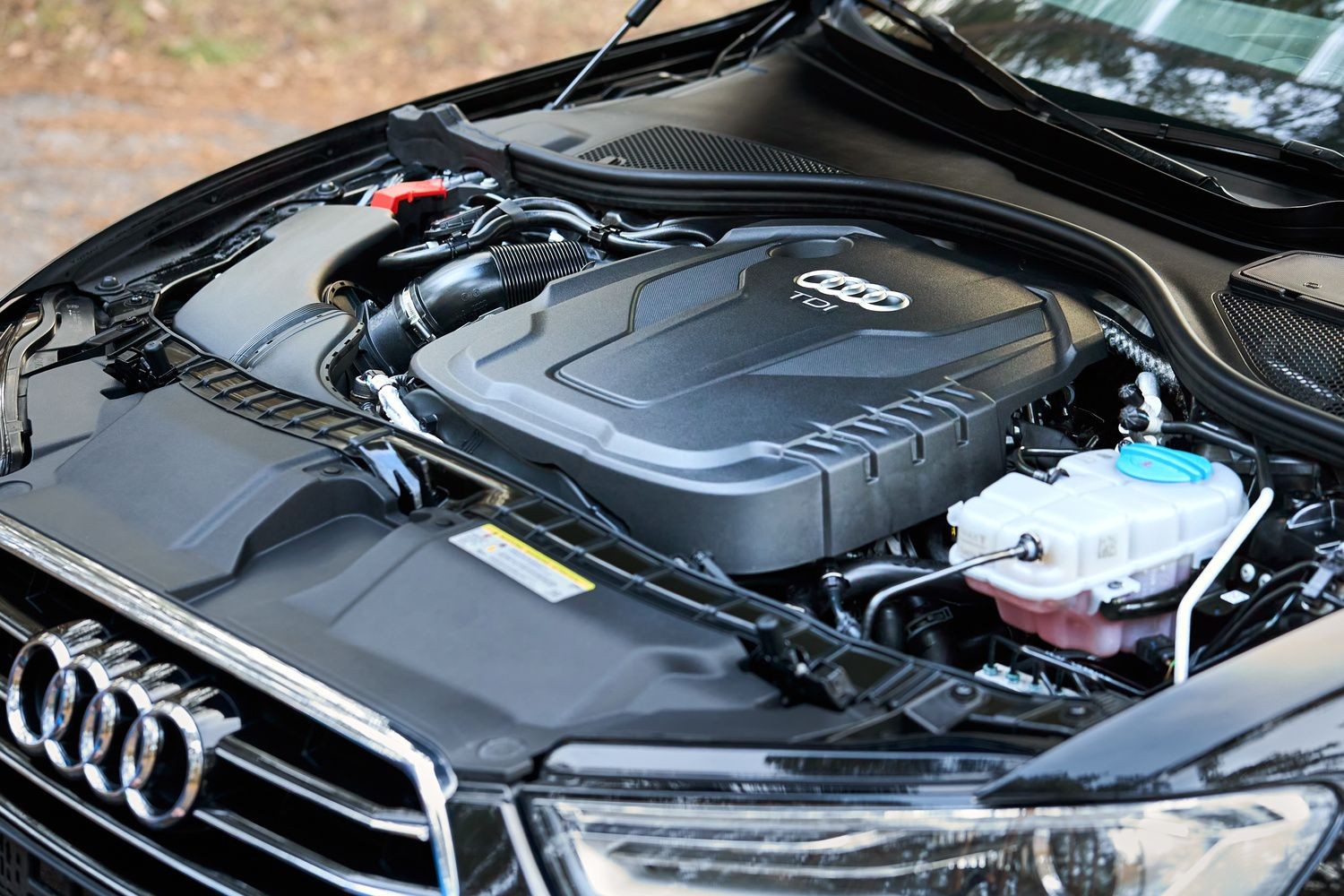The Audi A3, introduced in 1996, has long been Audi’s sporty and stylish answer to the Volkswagen Golf. Marketed as the more dynamic choice within the Volkswagen group, it shares the same platform as the Golf but aims for a more premium feel. However, like all vehicles, the modern Audi A3 isn’t immune to common problems that can arise from regular use and aging.
In this article, we’ll delve into some of the typical Audi A3 Faults that owners may encounter. Understanding these potential issues is crucial, especially if you’re considering purchasing a used Audi A3. Being informed can save you from unexpected and costly repairs down the line.
Audi A3 Reliability: Separating Fact from Fiction
When considering an Audi A3, many potential buyers ask: “Is the Audi A3 reliable?”. Reliability ratings for the Audi A3 can be somewhat mixed. For example, WhatCar? placed the A3 at the lower end of their 2022 reliability rankings. Similarly, MotorEasy’s reliability score of 63% suggests there have been reported quality concerns, particularly with models from 2021 onwards.
It’s important to take these figures in context. While these scores indicate potential issues, they don’t paint the whole picture. With consistent and timely maintenance, an Audi A3 can be as dependable as other vehicles in its class. Notably, a significant portion of warranty claims have been linked to automatic gearbox problems. Therefore, opting for a manual transmission model might mitigate some of these concerns and contribute to a more reliable ownership experience.
Investigating Audi A3 Gearbox Issues
DSG (Direct-Shift Gearbox) transmissions are a hallmark of Volkswagen Audi Group vehicles, offering rapid gear changes and fuel efficiency comparable to manual gearboxes. These sophisticated transmissions are used extensively in Audi A3 models. However, their complexity means they require diligent maintenance.
A recurring Audi A3 fault linked to the DSG gearbox is premature wear or malfunction, often stemming from missed service intervals. DSG gearboxes are particularly sensitive to oil quality. Contaminated or degraded oil can lead to significant problems. Adhering to the recommended oil change interval of approximately 40,000 miles is crucial for DSG gearbox longevity. Regular servicing is key to ensuring a smooth and trouble-free experience with your Audi A3’s gearbox.
 Audi Engine
Audi Engine
An Audi engine, representative of the powertrains found in A3 models, highlighting the importance of regular maintenance to prevent common Audi A3 faults.
Top 5 Common Audi A3 Faults
Given the high production volume of the Audi A3, it’s not surprising that certain issues tend to surface more frequently among owners. While these common Audi A3 faults can be indicators of areas needing attention, they also serve as a valuable checklist for prospective buyers. Here are five of the most reported problems:
1. Oil Pump Drive Failure in Diesel Models
A serious Audi A3 fault, particularly affecting diesel models produced between 2004 and 2008 with the 2.0 diesel engine, is oil pump drive failure. This issue involves excessive wear of the oil pump drive shaft. When this occurs, it leads to reduced oil pump performance and critically, low oil pressure.
Engine oil pressure is the lifeblood of your engine. Insufficient oil pressure can cause rapid and catastrophic engine damage. A seemingly healthy engine can fail within minutes if oil pressure is lost completely. If you are considering a used Audi A3 from this period, it’s essential to check for any history of oil pump issues or unusual engine noises.
2. Suspension Creaking and Rattling
Owners of relatively newer Audi A3 models, particularly those from 2016 onwards, have reported a noticeable number of complaints regarding front suspension noises. These include creaks and rattles, even in vehicles with relatively low mileage, sometimes as low as 20-30,000 miles.
The exact cause and definitive solution for this suspension creaking Audi A3 fault can be elusive. If you are test-driving an A3, pay close attention to any unusual noises emanating from the front suspension, especially when going over bumps or uneven surfaces. Potential fixes that have been suggested include replacing suspension bushes, such as those in the lower control arms and top mounts.
3. Diesel Fuel Pipe Splitting
For Audi A3 TDI (Turbocharged Direct Injection) diesel models manufactured between 2003 and 2012, splitting fuel pipes are a known problem. The diesel fuel lines within the engine bay can be susceptible to cracking due to engine vibrations over time.
This Audi A3 fuel system fault can lead to several issues, including reduced fuel economy, diesel leaks, and potential safety hazards. Fortunately, repairing split fuel pipes is generally not overly expensive. The pipes themselves are reasonably priced, and aftermarket upgraded fuel lines designed to better withstand vibration are also available.
4. Diverter Valve Problems in TFSI Engines
A common Audi A3 fault associated with the 2.0 TFSI (Turbo Fuel Stratified Injection) petrol engines is failure of the boost diverter valve. This valve is crucial for regulating turbocharger boost pressure. When the diverter valve diaphragm tears, it can result in a loss of inlet air pressure.
Symptoms of a failing diverter valve include reduced power, poor fuel economy, and a distinctive whistling noise, particularly during hard acceleration. Replacing the faulty diverter valve with a new unit resolves this issue. The updated valves often feature a more robust design to prevent future failures. For an experienced Audi technician, this repair is typically straightforward.
5. Rear Wiper Arm Drooping
A more minor, but still common, Audi A3 fault is a drooping rear wiper arm. The rear window wiper, while convenient, can sometimes develop an issue where the wiper arm gradually droops downwards over time.
To check for this, observe the resting position of the rear wiper arm after use. In its correct position, it should sit horizontally, with an even gap between the arm and the bottom edge of the rear window. If the arm is angled downwards, it has likely drooped. Garages can rectify this Audi A3 wiper fault using a puller tool to remove and reposition the wiper arm correctly. This is a simple and inexpensive fix that prevents the wiper from wiping too low and potentially damaging the paintwork.
6. Premature Rust on Front Wings (Fenders)
Rust on the front wings, or fenders, appears to be a recurring issue across various Volkswagen Audi Group vehicles, including the Audi A3, Volkswagen Golf, and Bora. This Audi A3 bodywork fault manifests as premature rusting, even on relatively young cars.
If your Audi A3 is less than 10 years old and exhibits rust on the front wings, it might be covered under Audi’s 10-year rust warranty. If covered, Audi should replace both front wings free of charge. If the car is outside of warranty, sourcing a replacement wing from a vehicle dismantler or parts car is likely the most economical solution.
Audi A3 Engine Longevity: How Many Miles Can You Expect?
Prospective buyers often wonder about Audi A3 engine lifespan. On average, an Audi A3 is estimated to last around 133,000 miles or 13 years. This is slightly below the average lifespan for a car in general. However, this figure is an average.
Crucially, the actual lifespan of any car engine, including the Audi A3’s, is heavily dependent on servicing and maintenance. A well-maintained Audi A3, with a comprehensive service history, can easily exceed this average mileage and continue to provide reliable service well beyond. Conversely, even vehicles with reputations for high reliability can suffer premature engine failure if maintenance is neglected.
Should You Consider Buying an Audi A3?
Despite the common Audi A3 faults outlined, these shouldn’t necessarily deter you from considering an A3 as your next vehicle. If the Audi A3 ticks your boxes in terms of practicality, style, and fuel efficiency, it remains a compelling option.
Being aware of these potential issues simply means you can be more informed when inspecting a used model and know what to look out for. Furthermore, remember that services like Bumper offer financing options for car repairs, providing a safety net should any unexpected issues arise after your purchase. You can easily find partnered garages in your area by visiting their website.
Author – Joseph Law
Joseph brings over seven years of automotive writing experience to Bumper, combining his passion for cars with a knack for engaging storytelling. His expertise spans engineering and automotive topics, with contributions to Autozilla, Komaspec, and numerous engineering manufacturers. When not writing or working on his own collection of five cars, Joseph dreams of owning an Alfa Romeo 33 Stradale.
